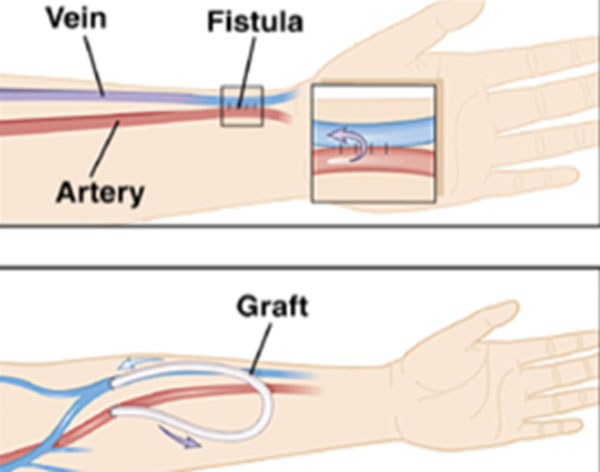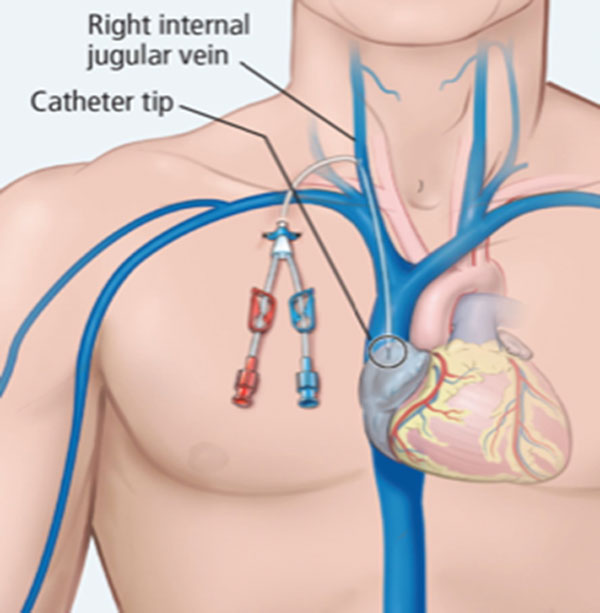Dialysis
Dialysis is a procedure to remove waste products and excess fluid from the blood when the kidneys stop working properly. It often involves diverting blood to a machine to be cleaned.
What is fistula creation?
An arteriovenous fistula creation is a surgery to connect an artery to a vein for patients with end-stage renal disease in order to receive dialysis. The result is an enlarged vein that provides easy and reliable vascular access for life-saving hemodialysis treatments.
How is a dialysis fistula formed?
A fistula (also called an arteriovenous fistula or A-V fistula) is made by joining an artery and a vein under the skin in your arm. When the artery and vein are joined, the pressure inside the vein increases, making the walls of the vein stronger. The stronger vein can then receive the needles used for hemodialysis.

A Graft is created by connecting a vein to an artery using tubing. Grafts are not used as often for dialysis access as fistula because they don't last as long and tend to have higher rates of infection.
A Permacath insertion is the placement of a special IV line into the blood vessel in your neck or upper chest just under the collarbone. This type of catheter is used for dialysis treatment. The catheter is then threaded into the right side of your heart (right atrium).
